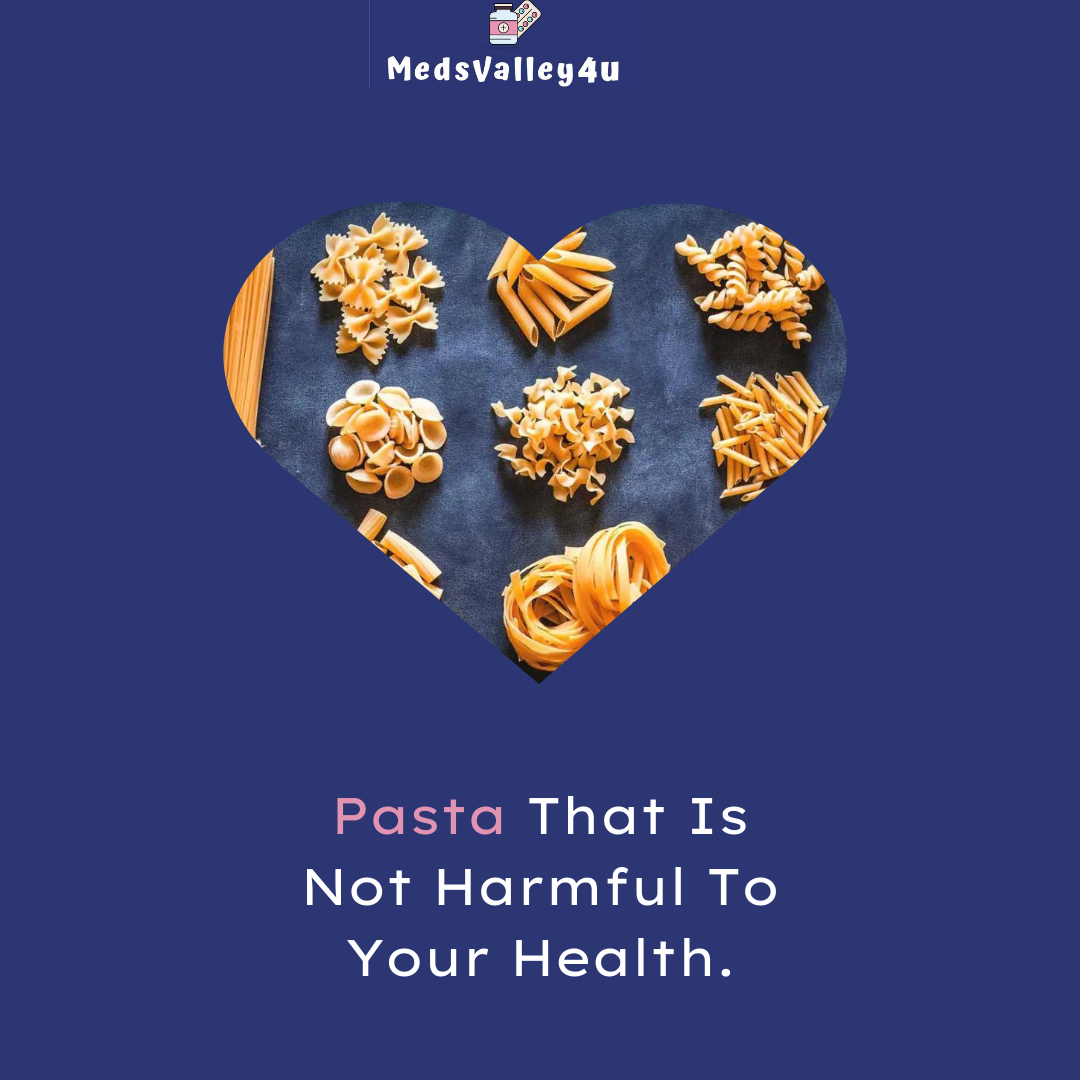Pasta That Is Not Harmful to Your Health: A Guide to Enjoying Pasta Wisely
Pasta is a beloved staple in diets around the world, offering versatility and comfort in a variety of dishes. However, pasta has often been criticized for its high carbohydrate content, with concerns about its potential impact on blood sugar levels, weight gain, and overall health. The key to enjoying pasta without negative health effects lies in choosing the right types, portion sizes, and pairing them with nutritious ingredients. In this article, we’ll explore how to make pasta a healthful part of your diet by selecting healthier varieties, understanding the role of carbohydrates, and incorporating pasta into balanced meals.
Understanding Pasta and Carbohydrates
Pasta is primarily made from refined wheat flour, which means it is high in carbohydrates. Carbohydrates are an essential macronutrient that the body uses for energy, but the type of carbohydrate you consume can have a significant impact on your health. Refined grains, like those used in traditional pasta, have been stripped of their bran and germ during processing. This removes much of the fiber, vitamins, and minerals, leaving behind a starchier product that can cause spikes in blood sugar.
When consumed in large quantities, refined carbohydrates can lead to rapid rises in blood sugar levels, followed by crashes, which can promote overeating and increase the risk of developing insulin resistance and type 2 diabetes. Additionally, a diet high in refined carbohydrates has been linked to weight gain and an increased risk of heart disease.
However, not all pasta is created equal, and there are many options available that are healthier than traditional white pasta. By choosing pasta made from whole grains or alternative ingredients, you can enjoy this beloved food while supporting your health.
Healthier Pasta Varieties
Here are several types of pasta that offer greater health benefits compared to regular refined wheat pasta:
- Whole Wheat Pasta: Whole wheat pasta is made from whole grain flour, meaning it contains all parts of the grain, including the bran, germ, and endosperm. This makes it higher in fiber, vitamins, and minerals than regular pasta. The increased fiber content in whole wheat pasta helps slow down the digestion and absorption of carbohydrates, which can prevent rapid spikes in blood sugar. Fiber also promotes digestive health, helps you feel fuller for longer, and supports weight management.Whole wheat pasta has a denser texture and a slightly nuttier flavor than traditional pasta, which some people may find appealing. It can be used in any recipe that calls for regular pasta, making it an easy and nutritious swap.
- Legume-Based Pasta: Pasta made from legumes like lentils, chickpeas, or black beans is another healthful alternative to traditional pasta. These pasta varieties are naturally gluten-free and high in protein and fiber, making them an excellent option for those looking to increase their intake of plant-based protein. For example, chickpea pasta contains about twice the amount of protein and fiber compared to regular wheat pasta, which can help stabilize blood sugar levels and support muscle repair and growth.Legume-based pasta also provides essential nutrients like iron, magnesium, and potassium, which are important for maintaining heart health and energy levels. Because they are made from whole legumes, these pastas tend to have a heartier texture and can be a satisfying addition to a balanced meal.
- Spelt or Kamut Pasta: Spelt and Kamut are ancient grains that have been cultivated for thousands of years and are less processed than modern wheat varieties. Pasta made from spelt or Kamut flour retains more of the grain’s natural nutrients, including fiber, vitamins, and minerals like zinc and magnesium. Both spelt and Kamut pasta offer a slightly nutty flavor and a chewy texture, making them a tasty alternative to refined wheat pasta.These grains also tend to be easier to digest for some people who are sensitive to modern wheat but do not have celiac disease. However, since they are still forms of wheat, they are not suitable for people with gluten intolerance or celiac disease.
- Gluten-Free Pasta: For individuals with celiac disease or gluten sensitivity, gluten-free pasta is an essential option. Gluten-free pasta is made from a variety of ingredients, including rice, corn, quinoa, and even vegetables like zucchini or sweet potatoes (spiralized into noodles). While gluten-free pasta made from refined grains like white rice or corn may still have a high glycemic index and fewer nutrients, there are many gluten-free options made from whole grains and other nutrient-rich ingredients.Quinoa-based pasta, for example, is high in protein, fiber, and essential amino acids, making it a nutritious gluten-free alternative. Additionally, pasta made from spiralized vegetables is naturally low in calories and carbohydrates, making it an excellent option for those looking to reduce their carbohydrate intake while still enjoying pasta-like dishes.
How to Make Pasta Healthier
Regardless of the type of pasta you choose, there are several ways to make your pasta dishes more nutritious and balanced. Here are some tips to ensure that your pasta meals support your overall health:
- Watch Portion Sizes: One of the main issues with pasta consumption is portion control. It’s easy to overeat pasta, especially when it’s served as the main course. A standard serving of cooked pasta is about 1 cup (roughly the size of a tennis ball), which contains about 200 calories. To keep portions in check, consider measuring out your pasta before cooking, or pair smaller amounts of pasta with larger servings of vegetables or salad to create a more balanced meal.
- Pair Pasta with Vegetables: Adding vegetables to your pasta dishes is an easy way to boost the nutritional content of your meal. Vegetables are low in calories and high in fiber, vitamins, and antioxidants, making them an ideal complement to pasta. Try tossing your pasta with sautéed spinach, roasted tomatoes, zucchini, or broccoli to add both flavor and nutrients. You can also mix spiralized vegetable noodles (such as zucchini or carrot noodles) with regular pasta for a lower-calorie, nutrient-packed meal.
- Choose Lean Proteins: Adding lean protein to your pasta dishes can help balance the meal and promote satiety. Opt for proteins like grilled chicken, turkey, shrimp, or plant-based options like tofu, tempeh, or beans. This will not only increase the protein content of your meal but also help slow the digestion of carbohydrates, keeping you fuller for longer and preventing blood sugar spikes.
- Use Healthy Fats: Incorporating healthy fats into your pasta dishes can enhance the flavor and promote heart health. Olive oil, avocado, and nuts are excellent sources of healthy fats that can improve the texture and taste of your pasta dishes. Olive oil, in particular, is rich in monounsaturated fats and antioxidants, which have been shown to support heart health and reduce inflammation.
- Limit Creamy or Heavy Sauces: Many pasta dishes are loaded with rich, creamy sauces that are high in saturated fat and calories. Instead of creamy Alfredo or cheese-based sauces, opt for lighter options like marinara, pesto, or a simple olive oil and garlic dressing. These sauces are lower in calories and fat but still pack a lot of flavor.
Conclusion
Pasta doesn’t have to be harmful to your health if you choose the right types and prepare it in a balanced, nutritious way. By opting for whole grain or legume-based pastas and pairing them with vegetables, lean proteins, and healthy fats, you can enjoy delicious pasta dishes that support your overall well-being. Remember to watch your portion sizes and avoid heavy, calorie-laden sauces to keep your pasta meals both satisfying and health-conscious.







Write a comment
Your email address will not be published. All fields are required